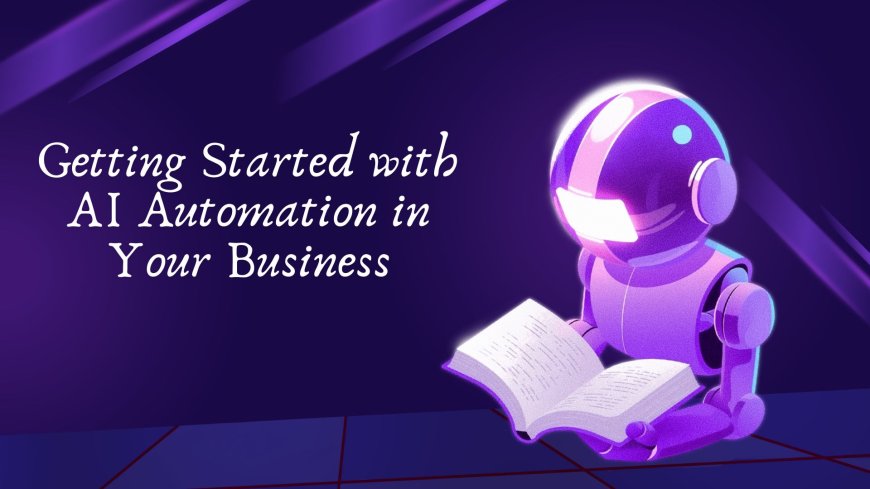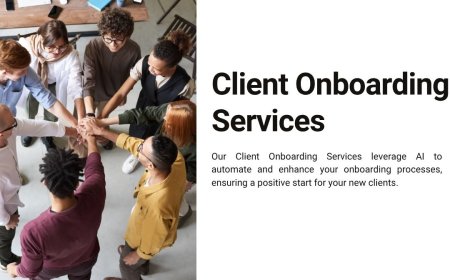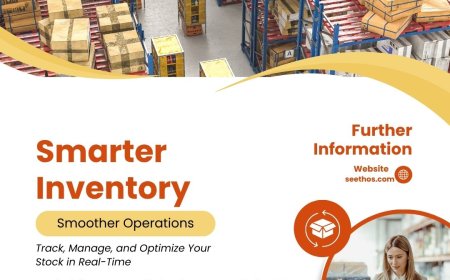Getting Started with AI Automation in Your Business
AI automation is no longer a futuristic concept—it's a present-day business necessity. Whether you're a startup or an established enterprise

In todays fast-paced, data-driven world, Artificial Intelligence (AI) automation is transforming how businesses operate across industries. From streamlining operations to enhancing customer experience, AI automation presents a powerful opportunity for businesses of all sizes to stay competitive, reduce costs, and scale efficiently.
If you're wondering how to begin your journey with AI automation, this guide offers a comprehensive roadmap for getting startedfrom understanding the basics to deploying your first solution.
What Is AI Automation?
AI automation refers to the use of AI technologieslike machine learning, natural language processing, and computer visionto automate tasks that typically require human intelligence. When combined with robotic process automation (RPA), AI can handle both routine and complex decision-making processes, delivering higher efficiency and improved accuracy.
Examples include:
-
Chatbots for customer support
-
Predictive analytics for sales and inventory
-
Automated invoicing and payroll
-
Smart email filtering and response systems
Why Your Business Needs AI Automation
-
Increased Efficiency: AI can work around the clock without breaks, significantly speeding up processes.
-
Cost Savings: Automating tasks reduces labor costs and minimizes human errors.
-
Improved Customer Experience: AI-powered chatbots and recommendation engines offer personalized services instantly.
-
Scalability: AI solutions grow with your business, allowing you to handle more customers or data without proportional increases in staff.
-
Competitive Edge: Early adopters of AI automation can outperform competitors in responsiveness and innovation.
Key Areas Where AI Automation Adds Value
Customer Service
-
Deploy AI chatbots and voice assistants to handle queries 24/7.
-
Use sentiment analysis to prioritize and route customer issues.
Sales and Marketing
-
Automate lead scoring, customer segmentation, and targeted email campaigns.
-
Leverage AI tools for social media monitoring and trend prediction.
Operations and Supply Chain
-
Implement demand forecasting using predictive analytics.
-
Use AI to automate inventory management and logistics optimization.
Finance and Accounting
-
Automate invoice processing, fraud detection, and financial reporting.
-
Use AI to predict cash flow and optimize budgeting.
Human Resources
-
Automate resume screening, onboarding processes, and employee engagement tracking.
Steps to Get Started with AI Automation
Step 1: Identify Automation Opportunities
Start by listing all manual processes in your business. Focus on repetitive, rule-based tasks with clear inputs and outputsthese are ideal for automation.
Step 2: Define Your Goals
Determine what you want to achieve with automation:
-
Reduce costs?
-
Improve speed or accuracy?
-
Increase customer satisfaction?
Having measurable goals will help you evaluate the effectiveness of your AI solution.
Step 3: Choose the Right AI Tools
There are many tools available depending on your needs:
-
Chatbots: Drift, Intercom, Tidio
-
Marketing Automation: HubSpot, Marketo
-
Finance Automation: QuickBooks with AI integrations, Xero
-
Process Automation: UiPath, Automation Anywhere
You can also explore AI platforms from tech giants like Microsoft Azure, Google Cloud AI, or IBM Watson.
Step 4: Start Small with a Pilot Project
Choose one high-impact area and run a small-scale pilot to test your AI automation. Gather feedback, measure performance, and refine the process before scaling.
Step 5: Train Your Team
Introduce training sessions to help your employees adapt to the new tools. Clarify how AI complements their work rather than replacing it.
Step 6: Monitor and Optimize
Use analytics and KPIs to monitor your AI systems. AI models improve over time, but regular fine-tuning is essential for long-term success.
Real-World Success Stories
-
Netflix uses AI algorithms to recommend content, reducing churn and increasing user engagement.
-
Amazon employs AI for dynamic pricing, warehouse automation, and personalized marketing.
-
Dominos Pizza automates order-taking and delivery tracking, enhancing the customer experience.
These examples show how AI automation isn't just for tech giants. Small and medium businesses are also using these tools to create smarter operations and boost profitability.
Final Thoughts
AI automation is no longer a futuristic conceptit's a present-day business necessity. Whether you're a startup or an established enterprise, incorporating AI into your business strategy can transform the way you work and serve your customers.
The key is to start small, think big, and scale fast. With the right tools, partners, and mindset, your business can unlock the full potential of AI automation and thrive in the digital age.






































